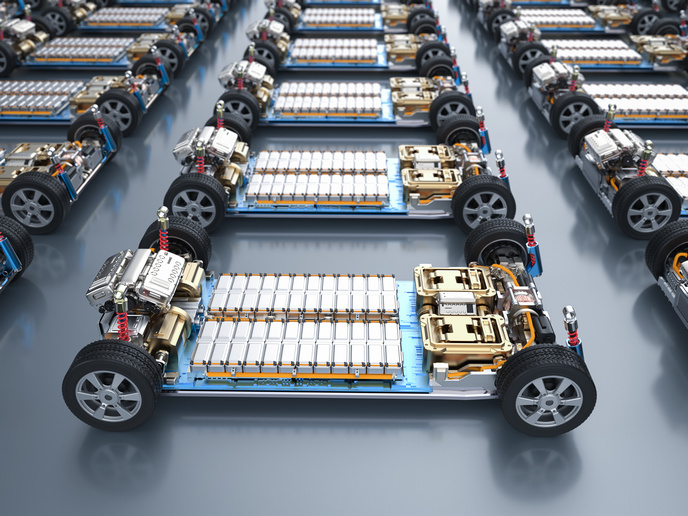Driving down costs of electric vehicle batteries
The transition to electric vehicles (EVs) has sparked a surge in demand for battery cells, and Europe is gearing up to become a major player in the manufacturing of these crucial components. With companies investing billions of euros in new factories and production facilities, Europe is poised to dominate the global market for EV batteries. The EU-funded DEFACTO project set out to revolutionise the EV battery cell manufacturing industry in Europe. Inspired by the projected massive increase in the use of EVs, and driven by opportunities for a drastic reduction in costs and an increase in their functionalities, DEFACTO set out to make sure the path is as smooth as possible. Specifically, the project addressed the challenges of reducing the cost of battery packs, which currently account for 35 % of EV costs, by improving energy density and optimising the manufacturing process. “The basic components of batteries, electrochemical cells, represent an important market for the European industry, estimated at EUR 250 billion in 2025,” explained Elixabete Ayerbe, DEFACTO project coordinator. “A battery pack is composed of multiple modules, each of which contains between 6 and 12 cells. Cells are a cost-intensive element which represents near 70 % of battery packs’ composition.”
Multiscale models used to optimise cell design
To accelerate the battery cell manufacturing process chain, DEFACTO developed multiphysic and multiscale models to better understand the material, cell and manufacturing process behaviour. This was aimed at accelerating cell development and the research and innovation process and optimising cell design and functionality. “Currently, companies incur significant laboratory and personnel costs to improve the cell design and manufacturing process of batteries,” stated Ayerbe. “In this sense, DEFACTO has implemented a multidisciplinary method that combines laboratory work, prototyping and multiphysics multiscale models to boost and accelerate the battery cell manufacturing process chain.” The project also contributed to the standardisation of measurement procedures, the creation of new market opportunities and the improvement of industry competitiveness. The validated computational simulations will assist tailoring new optimum cell designs, optimising manufacturing steps of electrode processing and electrolyte filling, and shaping new-generation 3b materials.
New high-capacity Li-ion cell generation 3b battery
DEFACTO used two cell technologies for the automotive market. The first is a commercial NMC622/G cell taken from the product portfolio of one of the project partners. The second is a last-generation prototype (NMC-811/G-Si). The two cell chemistries correspond to the main interest of the market. In terms of market forecasts, a wide adoption of NMC-811 cathodes in the EV market is expected after 2025. “The DEFACTO approach allowed developing a new high-capacity and high-voltage Li-ion cell generation 3b battery,” explained Ayerbe. “This increased the understanding of multiscale mechanisms and their interactions, reducing R&D cell development resources, and therefore unlocking an innovation-led cell manufacturing industry in Europe.” By contributing to the development of the next generation of high-capacity and high-voltage Li-ion cell batteries, which are the major power source for EV batteries, the project has allowed for the acceleration of cell development and R&I process. DEFACTO works towards optimising cell design and functionality. “Developing the DEFACTO workflow, a framework that mimics the main cell manufacturing steps such as the electrode processing and electrolyte filling and later predicts cells’ performance and ageing, will turbocharge the development of next-generation Li-ion batteries,” noted Ayerbe.
Keywords
DEFACTO, battery cell, Li-ion, electric vehicle, EVs, electrode, cathode, transportation



